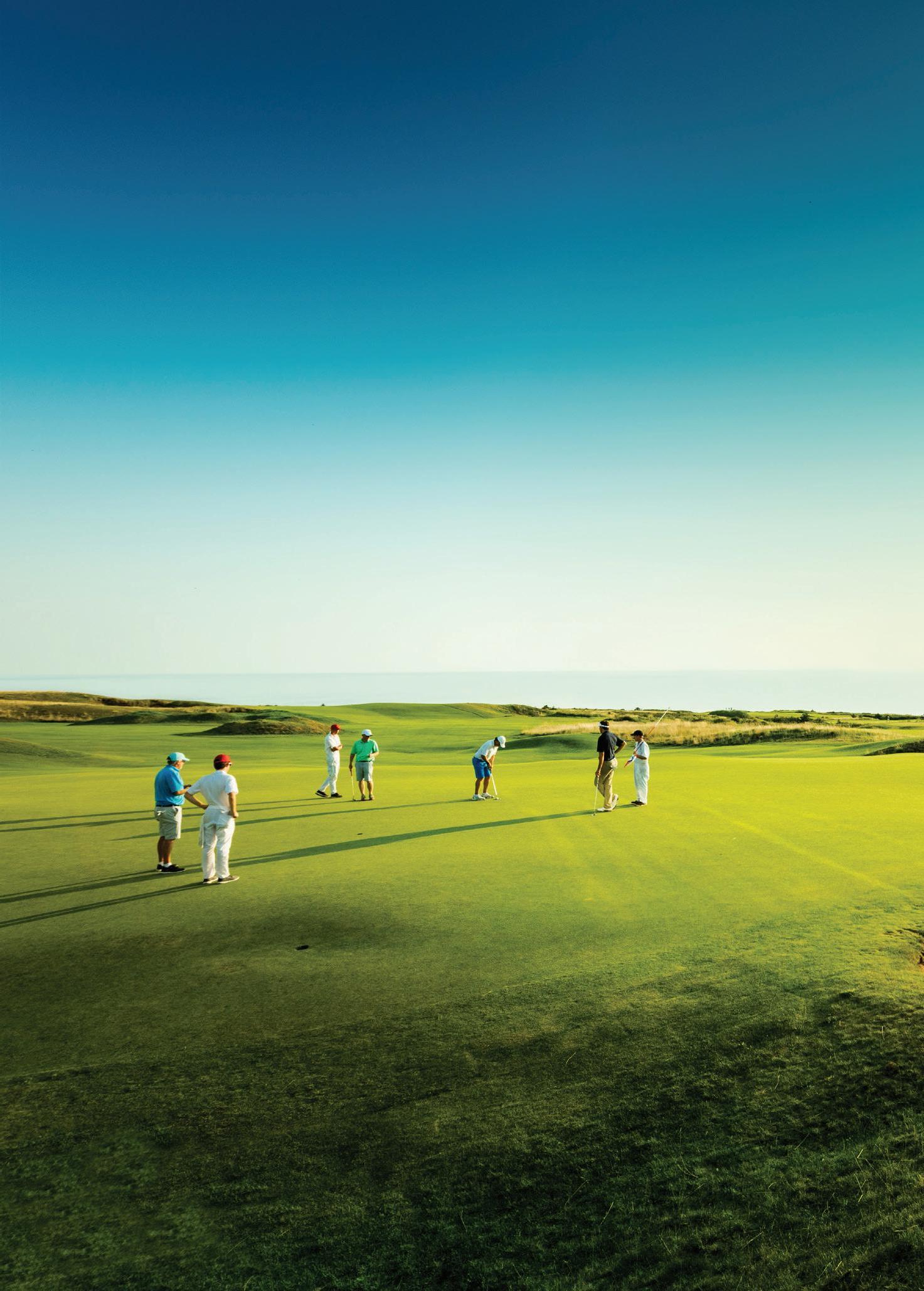
3 minute read
The Missing Links
By Darcy Rhyno
A son makes his mother’s dream of playing the perfect course come true in Cape Breton
A saturating mist drifts off the Northumberland Strait, rolls over the dunes at Cabot Links and climbs the bluffs at Cabot Cliffs. Dark clouds stalled against the gentle slopes of the Cape Breton highlands threaten rain. In the buffeting winds, fishing boats docked at the wharf in tiny Inverness harbour tug at their moorings.
Through the spitting wind at Cabot Links’ first tee, my 75-year-old mother cinches up her windbreaker and declares, “It’s a perfect day for golf.”

The famous Cabot Trail
©Tourism Nova Scotia
I’ve brought her here as a gift. For many years, she played golf for eight months a year at home and another four months when she wintered in Florida as a snowbird. She’s often dreamed of playing a perfect course, and Cabot Links is where she can finally see that dream come true.
Dressed in her new outfit purchased just for this special trip, she looks every bit the experienced golfer. A links course so exposed to ocean elements is no place for bare legs and a thin windbreaker, but nothing is going to stop her from finishing these 18 holes. In fact, today’s weather only makes her more determined. She tees up and belts a ball down the first fairway.

At Cabot Links, every hole offers an ocean view
©Tourism Nova Scotia
It’s these rugged Nova Scotia coastal conditions that contribute to the ranking of the twin Cabots among the top 10 or 20 courses in the world. The landscape and climate here are as close as it gets to those of St. Andrews, Scotland, the birthplace of the game. My mother and I have come here to play both, but she’s most looking forward to this course. While many courses add “links” to their names, few live up to the promise like Cabot. When golf was invented 600 years ago in Scotland, it was played on links or coastal lands and dunes shared as pasture by the members of a community. Grazing animals kept the vegetation cropped on the hard packed, undulating turf. There were few water hazards and fewer trees. It happens that these course characteristics from the dawn of golf favour my mother’s running game. Her shots tend to stay low and can run much further on a links course than on lush, grassy fairways.
By the fifth hole, I’ve taken a rare lead on the score card, but the damp breezes have reached deep into our bones. I lend her my jacket and we carry on, driving balls across the on-shore winds and whacking at those we’ve dropped into sand traps so deep, they honour the evil 14th hole Hell Bunker on the Old Course at St. Andrews. I don’t expect my lead to last – this is her day, and she’s digging deep. “This is what golfing is meant to be,” she says. “It’s just like those courses you see the pros playing on TV.”

Panorama Restaurant
©Tourism Nova Scotia
By the time we complete the circuit back to the Panorama Restaurant and the luxury accommodations overlooking the 18th green, my mother has more than restored her lead. She has beaten me handily.
At Panorama, I chase the chill out of my bones with a dram of Glen Breton single malt whisky made just a few kilometres from here at Glenora Distillery. Mom prefers a glass of red wine from Nova Scotia’s Annapolis Valley. We order dinner and watch the last golfers wrap up their rounds just below us on the final green.

Delicious offerings of land and sea at Panorama Restaurant
©Tourism Nova Scotia
The sun suddenly blazes on the horizon over the water, giving us hope for improved conditions tomorrow when we can jump on the Cabot Cliffs course next door. Along with the forecast, it promises a sparkling dawn and a day to remember. The smile on her face says that bringing her here ranks me among the world’s best sons. We make a toast to living the dream of golfing on one perfect course after another.










